
NATO Standing Naval Forces
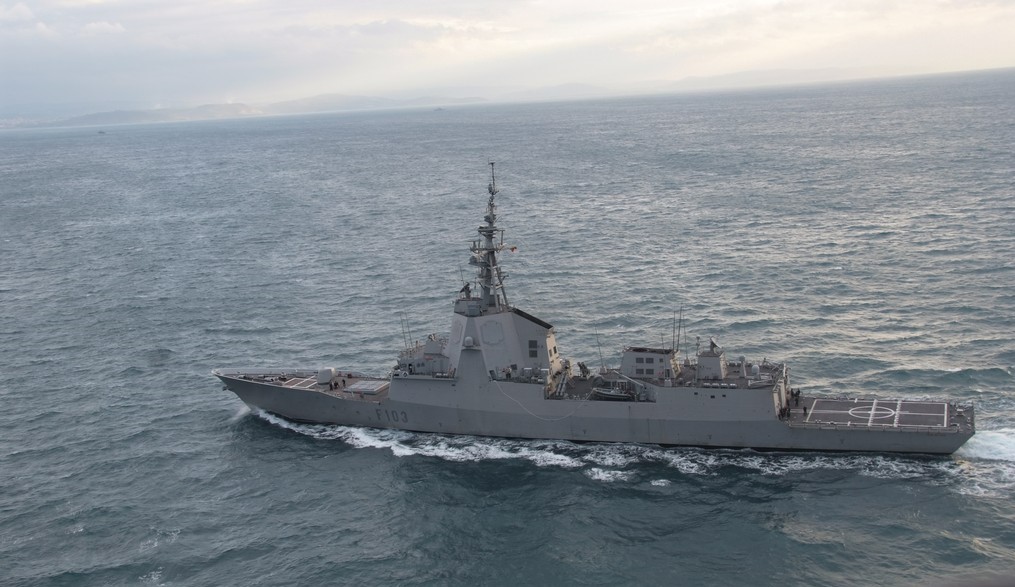
The Standing Naval Forces are under the control of NATO Allied Maritime Command which responds to Allied Command Operations.
They are comprised of the Standing NATO Maritime Groups 1 and 2, and Standing NATO Mine Countermeasures Groups 1 and 2.
This multinational, integrated force is continuously available to perform tasks ranging from participating to exercises to conducting NATO missions. These forces are part of the maritime component of the NATO Response Force.
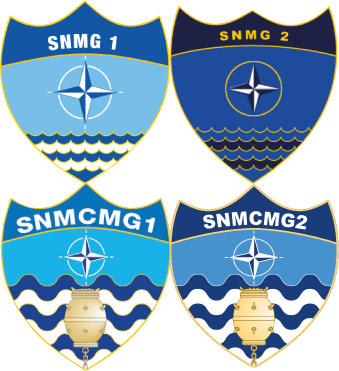
NATO has Standing Naval Forces (SNF) that provide the Alliance with a continuous naval presence. This multinational deterrent force constitutes an essential maritime requirement for the Alliance. It carries out a programme of scheduled exercises, manoeuvres and port visits, and can be rapidly deployed in times of crisis or tension.
NATO’s SNFs consist of four groups: the Standing NATO Maritime Groups (SNMGs) composed of SNMG1 and SNMG2; and the Standing NATO Mine Countermeasures Groups (SNMCMG1 and SNMCMG2). All four Groups are integrated into the NATO Response Force (NRF), the Alliance’s rapid-reaction force.
SNMG1 and SNMG2
The Standing NATO Maritime Groups are a multinational, integrated maritime force made up of vessels from various Allied countries. These vessels are permanently available to NATO to perform different tasks ranging from exercises to operational missions. They also help to establish Alliance presence, demonstrate solidarity, conduct routine diplomatic visits to different countries, support partner engagement, and provide a variety of maritime military capabilities to ongoing missions.
SNMG1 and SNMG2 function according to the operational needs of the Alliance, therefore helping to maintain optimal flexibility. Their composition varies and they are usually composed of between two and six ships from as many NATO member countries.
SNMG1 and SNMG2 fall under the authority of Allied Maritime Command (MARCOM), Northwood, United Kingdom following MARCOM’s December 2012 inauguration as the operational hub for all Alliance maritime operations. MARCOM also has two subordinate commands – Submarine Command (COMSUBNATO) and Maritime Air Command (COMMARAIR) – as well as the NATO Shipping Centre, which plays an important role in countering piracy.
SNMCMG1 and SNMCMG2
The Standing NATO Mine Countermeasures Groups – SNMCMG1 and SNMCMG2 – are multinational forces that primarily engage in search and explosive ordnance disposal operations. SNMCMG2 also conducts historical ordnance disposal operations to minimise the threat from mines dating back to the Second World War.
Both SNMCMG groups are key assets in the NATO Response Force (NRF) and are able to fulfil a wide range of roles from humanitarian tasks to operations. They can deploy at short notice and are often the first assets to enter an operational theatre.
SNMCMG1 was formed in the Belgian port of Ostend on 11 May 1973 to ensure safety of navigation around the ports of the English Channel and northwest Europe. Originally called “Standing Naval Force Channel”, its name was changed several times to reflect its expanding area of operation. Today, the Group is capable of operating nearly anywhere in the world.
SNMCMG2 developed from an on-call force for the Mediterranean, which was created in 1969. It also evolved over time to reflect its new responsibilities.
SNMCMG2 and SNMCMG1 were both given their current names in 2006.
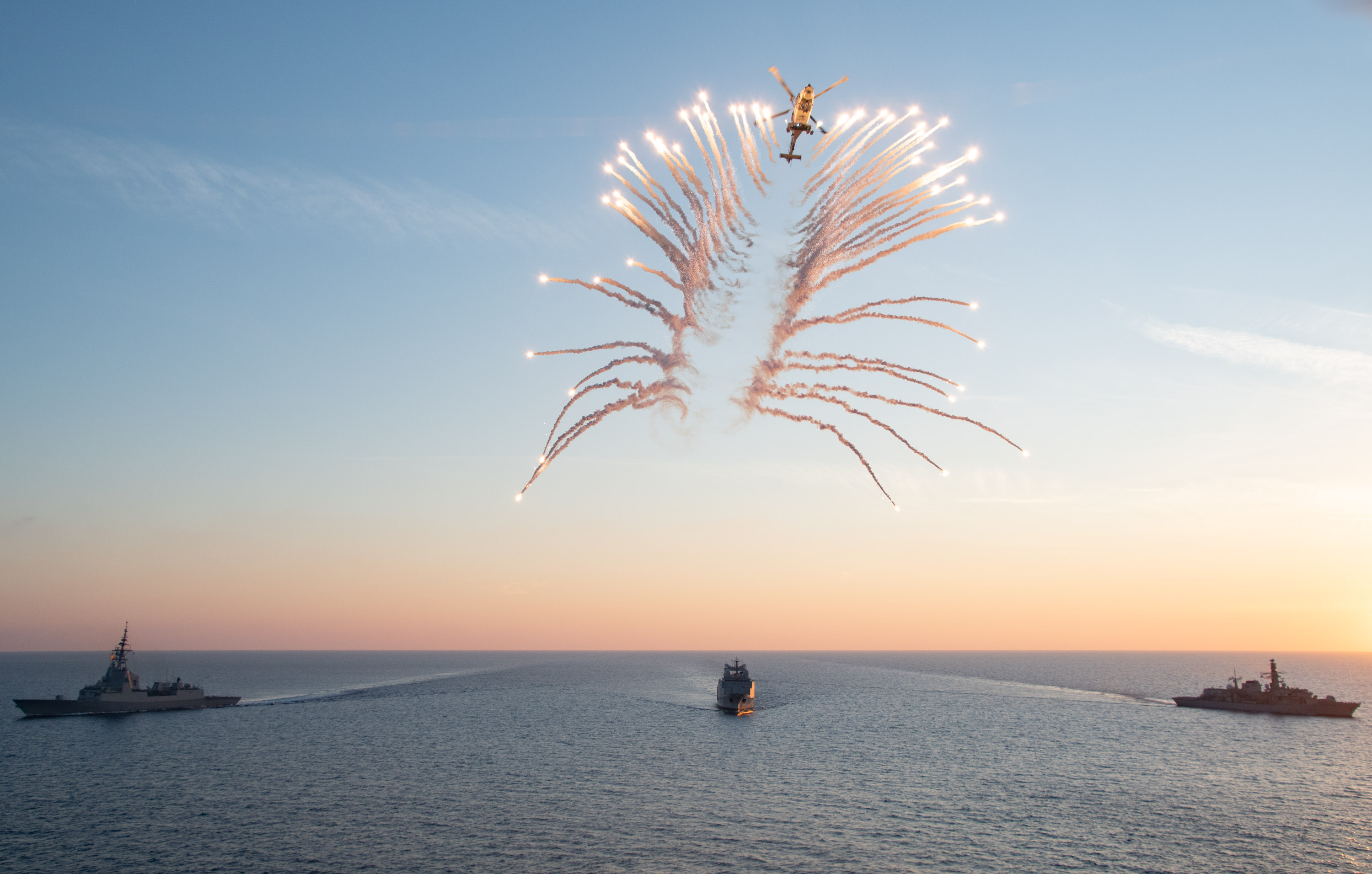
The Military Planning Directive of 2017 includes among the operational situations for the action of the Joint Force (JF), the contribution to deterrence, which involves "actions of advanced presence and contribution to the Response Forces in the field of NATO and EU".
The mission of assets asigned to NATO by Spain is to conduct the deployment, withdrawal and coordination on support of the naval forces in the NATO groups (SNF) and to monitor the activities and operations carried out by the transferred forces.
The planned Spanish contribution is as follows:
- SNMG-1
- 1 Frigate for a two-month period.
- SNMG-2
- 1 Frigate for a six-month period (first semester) and five-month period (2nd semester).
- 1 AOR for a two-month period.
- SNMCMG-2
- 1 minehunter for two periods of two months.
2024
- August 13st. The F-105 frigate 'Cristóbal Colón' ends its integration into NATO naval group SNMG-2.
- December 09th. The M-36 minehunter ‘Tajo’ ends its participation in NATO's SNMCMG2.
- December 1st. The BAC 'Cantabria' (A-15) completes its integration in the NATO naval group SNMG-2.
- September 27th. The BAC 'Cantabria' (A-15) joins NATO SNMG2.
- September 13 th. The minehunter M-36 'Tajo' joins NATO's SNMCMG2.
- August 23rd. The F-105 frigate 'Cristóbal Colón' begins its integration into NATO naval group SNMG-2.
- July 04th. Frigate 'Cristóbal Colón' (F-105) starts its deployment within SNMG-2.
- July 11th. The frigate F-102 'Almirante Juan de Borbón' (F-102) ends deployment whithin SNMG1 as a command ship.
- July 04th. Frigate 'Álvaro de Bazán' (F-101) starts its deployment within SNMG-1.
- June 10th.The M-31 minehunter ‘Segura’ ends its participation in NATO's SNMCMG2.
- March 10th. The BAC 'Cantabria' (A-15) ends deployment within SNMG-1.
- March 6th. The minehunter M-31 'Segura' joins NATO's SNMCMG2.
- January 6th. The frigate F-102 'Almirante Juan de Borbón' (F-102) joins NATO SNMG1 as a command ship.
- January 6th. The BAC 'Cantabria' (A-15) joins NATO SNMG1.
2023
- December 22nd. The NATO frigate 'Mendez Nuñez (F-104) completes its integration into NATO's SNMG2.
- December 22nd. The minehunter 'Tambre' (M-33) completes its integration into NATO's SNMCMG2.
- December 10th. The BAC 'Patiño' (A-14) ends its deployment within the SNMCMG-2.
- November 2nd. The minehunter 'Tajo' (M-36) completes its integration into the NATO naval group SNMCMG2.
- September 27 September. The BAC 'Patiño' (A-14) joins NATO's SNMG2.
- September 15th. The minehunter 'Tambre' (M-33) joins NATO's SNMCMG2.
- September 12th. The minehunter 'Tajo' (M-36) joins the NATO naval grouping SNMCMG2.
- August 08th. The frigate "Mendez Nuñez" (F-104) joins NATO's SNMG2
- June 26th. Frigate 'Álvaro de Bazán' (F-101) ends deployment within SNMG-1.
- June 1st. Minehunter'Tajo' (M-36) ends its deployment within the SNMCMG-2.
- May 26th. AOR 'Patiño'( A-14) is integrated into the NATO naval group SNMG-2.
- February 22th. Minehunter 'Tajo' (M-36) joins the NATO SNMCMG2 naval group.
- February 15th. Frigate 'Álvaro de Bazán' (F-101) joins the NATO SNMG-1 naval group.
2022
- December 17th. Frigate 'Cristobal Colón' (F-105) ends deployment within SNMG-2.
- November 21st. Minehunter 'Duero' ends deployment within the SNMCMG-2.
- August 31th. Minehunter 'Duero' departures from Cartagena to join SNMCMG-2.
- August 31th. Frigate 'Cristobal Colón' (F-105) relieves 'Almirante Juan de Borbón' (F-102).
- July 15th. Frigate ‘Almirante Juan de Borbón’ (F-102) is integrated into the NATO naval group SNMG-2.
- June 30th. OPV 'Meteoro' ends its period as flagship of SNMCMG-2.
- June 26th AOR 'Cantabria' (A-15) ends deployment within SNMG-2.
- May 2nd. Fleet Replenishment Ship, AOR 'CANTABRIA' (A-15) set off from Ferrol to join SNMG-2.
- March 25th. Minehunter 'Sella' ends deployment within the SNMCMG-2.
- January 25th. Minehunter 'Sella' departures from Cartagena to join SNMCMG-2.
- January 25th. Frigate 'Blas de Lezo' (F-103) is integrated into the NATO naval group SNMG-2.
- January 12nd. BAM 'Meteoro' begins its task as SNMCMG-2 flagship.
2021
- December 13th. Spanish minehunter 'Segura' ends integration into the NATO naval group SNMCMG-2.
- October 30th. Frigate 'Almirante Juan de Borbón' ends its deployment within the SNMG-1.
- October 18th. Spanish minehunter 'Segura' is integrated into the NATO naval group SNMCMG-2.
- October 1st. AOR 'Cantabria' ends deployment within SNMG-2.
- September 25th. Spain's ambassador to Turkey visits BAM 'Rayo' docked at the port of Istanbul.
- September 17th. Frigate 'Almirante Juan de Borbón' gets integrated into the SNMG-1.
- August 21st. AOR 'Cantabria' set off from Ferrol to join SNMG-2
- August 5th. Spain's ambassador to Israel visits BAM 'Rayo', docked at Haifa port.
- June 25th. BAM 'Rayo' sets off from the port of Cartagena as SNMCMG-2 flagship.
- June 22nd. BAM 'Rayo' begins its task as SNMCMG-2 flagship.
- June 22nd. Frigate 'Méndez Núñez' returns to the port of Cartagena, ending its task as SNMCMG-2 flagship.
- April 20th. Mine hunter 'Tajo' completes its integration within the SNMCMG-2.
- March 26th. Spanish CHOD visits frigate 'Méndez Núñez', SNMG-2 flaship, at the Romanian port of Constanza.
- March 22nd. Spanish frigate 'Méndez Núñez' takes over from frigate 'Cristóbal Colón' as SNMG-2 flagship.
- February 25th. NATO kicks off its most important naval exercise in the Mediterranean, 'Dynamic Manta' 2021. Spanish frigate 'Cristóbal Colón' acts as SNMG-2 flagship.
- February 19th. Spanish minehunter 'Tajo' is integrated into the NATO naval group SNMCMG-2. The integration ceremony took place in the port of Tuzla (Turkey).
- January 9th. Frigate 'Cristóbal Colón' sets off from its home port in Ferrol to resume its misión as SNMG2's flagship.
2020
- December 18th. Frigate 'Cristóbal Colón', SNMG2's flagship returns to its home port in Ferrol for 'winter dispersal'.
- November 26th. The combat replenishment vessel (BAC in Spanish) ‘Patiño’ completed its integration into the Standing NATO Maritime Group 2 (SNMG-2) after two months of international deployment.
- November 13th. Spanish Frigate ‘Cristobal Colón’ joins SNMG2 and takes over from Frigate ‘Alvaro de Bazán’ as flagship
- November 10th. Mine hunter 'Duero' completed the integration in SNMCMG-2.
- September 25th. Replenishment ship (BAC in Spanish) "Patiño" joins the Standing NATO Maritime Group 2 (SNMG-2).
- September 20th. Mine hunter 'Duero' departs from Cartagena to join SNMCMG-2. The deployment will end in November.
- September 19th. Fleet Replenishment Ship 'Patiño' departs from Ferrol to join SNMG-2.
- August 14th. NATO´s SNMG2 Command Ship arrives in Rota Naval Base.
- August 7th. Mine-hunter 'Tambre' returns to Spain after being deployed within the SNMCMG-2.
- July 23rd.Frigate 'Álvaro de Bazán' supports 'USS Porter' on a medical evacuation.
- July 1st. NATO’s Standing Naval Group 2 (SNMG-2), HOTO ceremony has taken place in Rota. Captain Manuel Aguirre Aldereguía has taken over from Italian Admiral Paolo Fantoni.
- June 14th. Spanish mine hunter 'TAMBRE' begins its integration into the Standing Nato Mine Countermeasures Group 2.
2019
- December 11. BAC 'Patiño' ends its participation within Standing NATO Maritime Group 2.
- November 22. Frigate 'BLAS DE LEZO' ends its integration into SNMG-2.
- August 27. Frigate 'BLAS DE LEZO' joins NSNMG-2.
- March 1. Minehunter 'Tajo' is integrated into the Operation.
2018
- September 14. ‘Turia’ minehunter, will be incorporated into the Standing NATO Mine Countermeasure Group no. 2 (SNMCMG-2).
- August 25. 'Cristóbal Colón' frigate departs from Ferrol to join the Standing NATO Maritime Group (SNMG-2), where it will remain until December.
- February 25. 'Victoria' frigate departs from Rota to be integrated into the Standing NATO Maritime Group (SNMG-2) for the next three months.
- February 15. 'Segura' minehunter joins the Standing NATO Mine Countermeasure Group no. 2 (SNMCMG-2) for the next three months.
2017
- April 3. 'Reina Sofía' frigate is integrated into the SNMG-1 in Plymouth (UK).
- April 1. 'Tajo' minehunter replaces 'Duero' in SNMCMG-2.
- March 5. Handover/takeover (HOTO) between 'Almirante Juan de Borbón' frigate and 'Méndez Núñez' frigate as command ship at the Port of Tarento (Italy). “Patiño” supply-class fast combat support ship is incorporated.
- January 29. Ship Captain Rubén Rodríguez Peña takes command of the SNMG-2 in Istanbul.
- January 28. 'Duero' is incorporated into the SNMCMG-2 in La Spezia (Italy).
EMAD PRESS RELEASES ON NATO Standing Naval Forces
-

The frigate F-105 ‘Cristóbal Colón’ completes its integration into NATO's Standing Naval Group No. 2
The frigate F-105 ‘Cristóbal Colón’ completes its integration into NATO's Standing Naval Group No. 2
2024/12/15In Ferrol
More information -
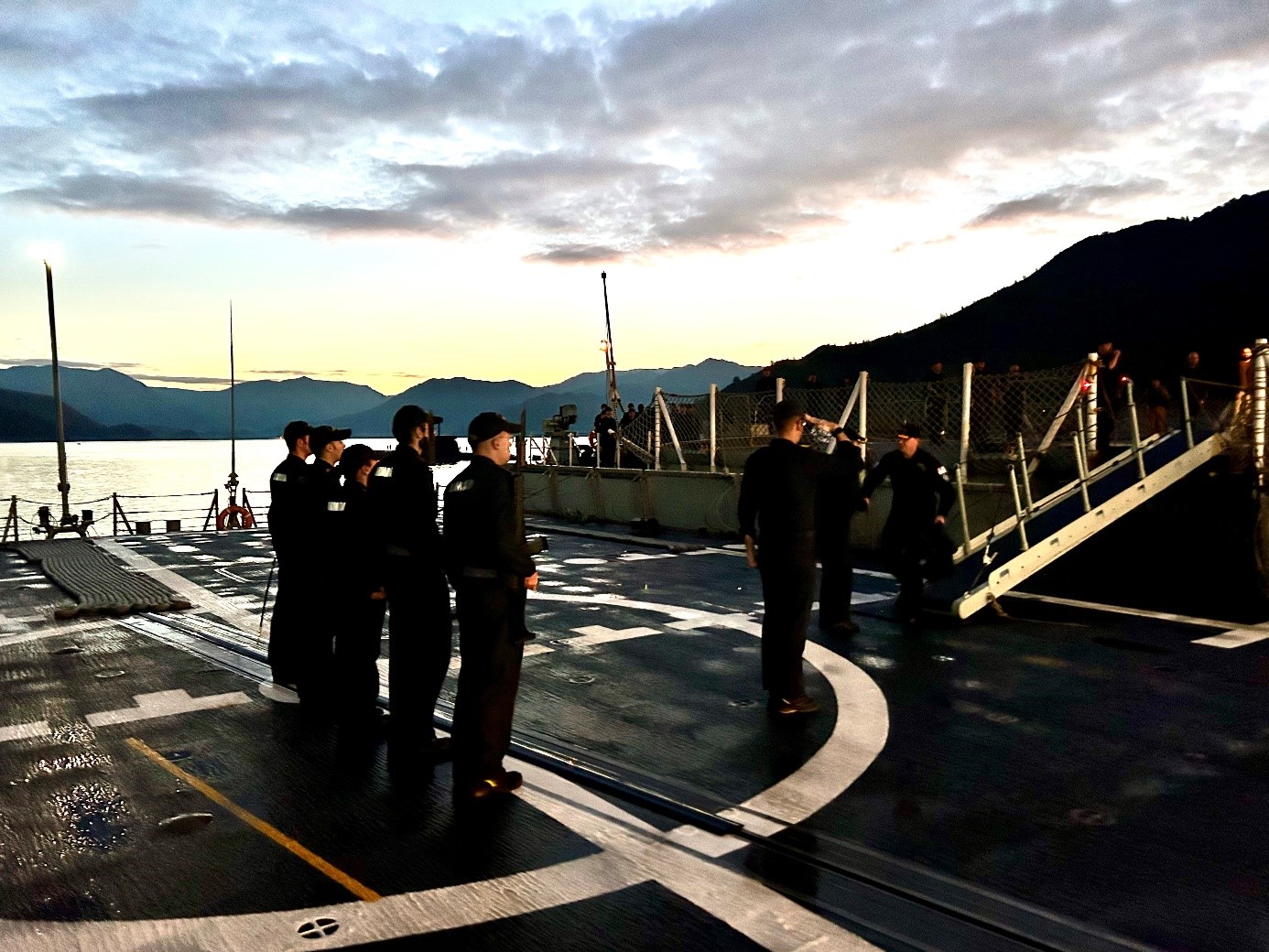
La fragata ‘Cristóbal Colón’ recibe la visita del Comandante de la Agrupación Naval Permanente nº2 de la OTAN
La fragata ‘Cristóbal Colón’ recibe la visita del Comandante de la Agrupación Naval Permanente nº2 de la OTAN
2024/11/21En el Mediterráneo
More information -
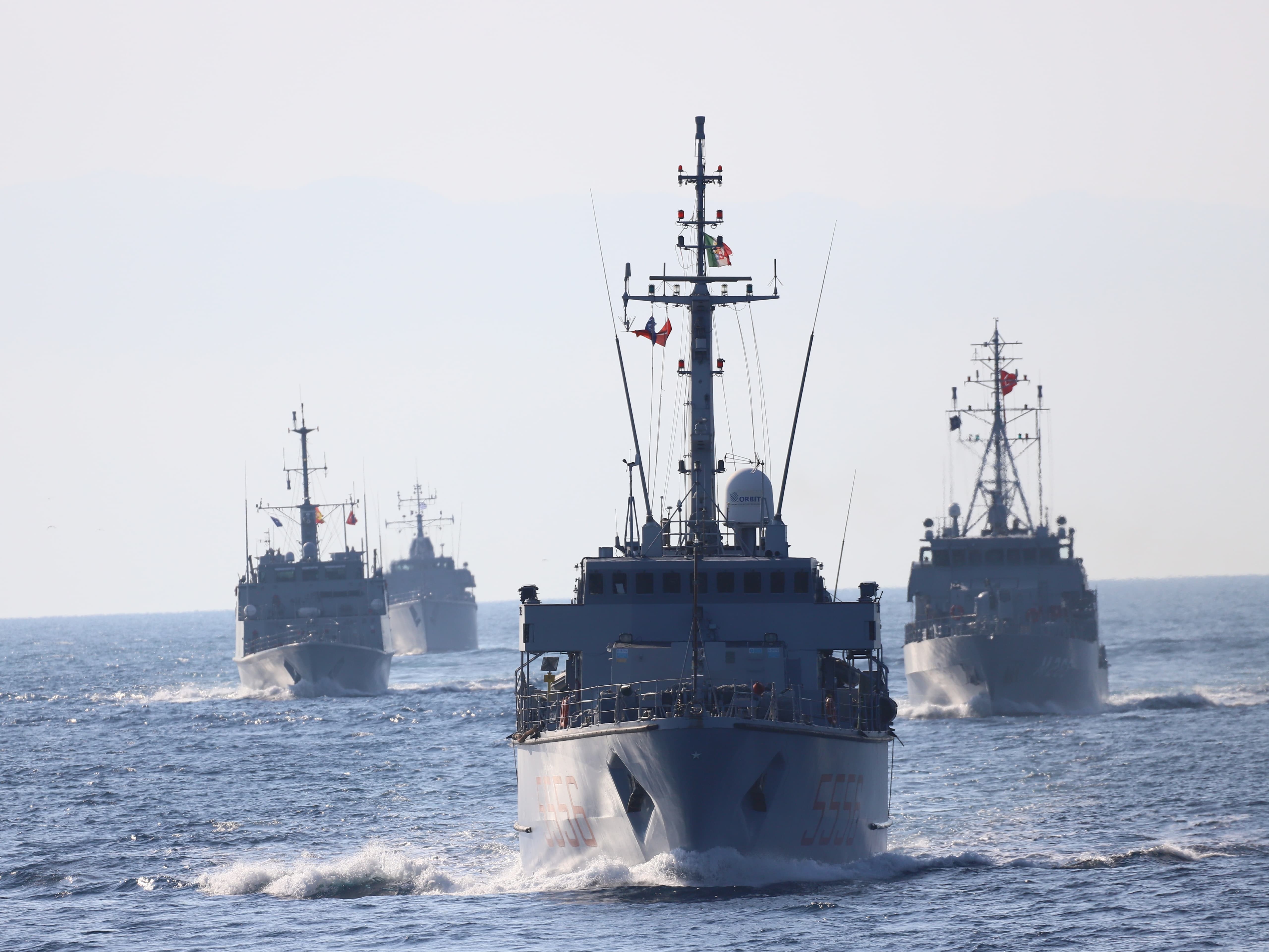
El cazaminas ‘Tajo’ alcanza el ecuador de su despliegue en la Agrupación Permanente de Medidas Contra Minas nº 2 de la OTAN
El cazaminas ‘Tajo’ alcanza el ecuador de su despliegue en la Agrupación Permanente de Medidas Contra Minas nº 2 de la OTAN
2024/11/01En El Pireo, Grecia
More information -
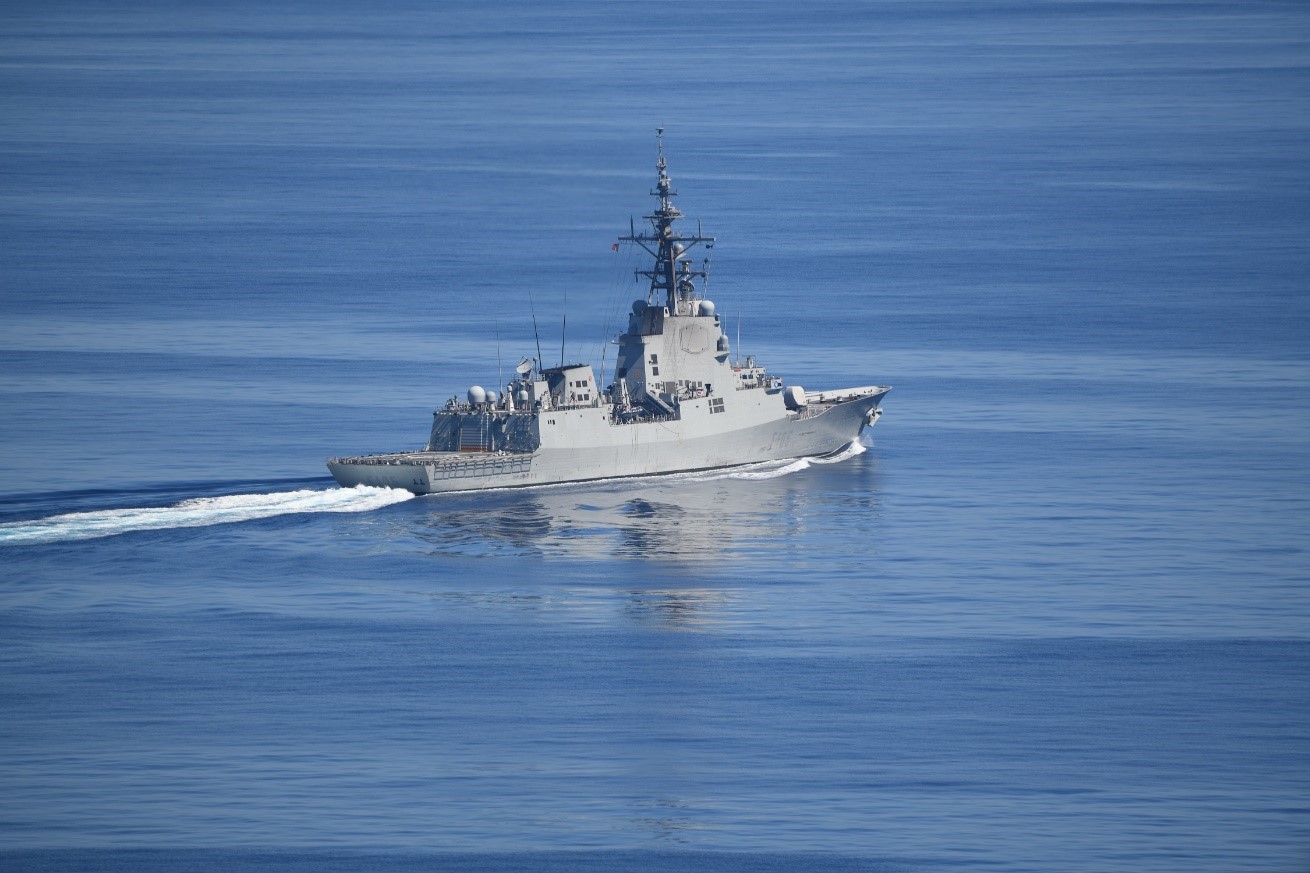
The frigate 'Cristóbal Colón' is participating in the 'Neptune Strike' 24-2 enhanced surveillance activities
The frigate 'Cristóbal Colón' is participating in the 'Neptune Strike' 24-2 enhanced surveillance activities
2024/10/28At the Mediterranean Sea
More information -
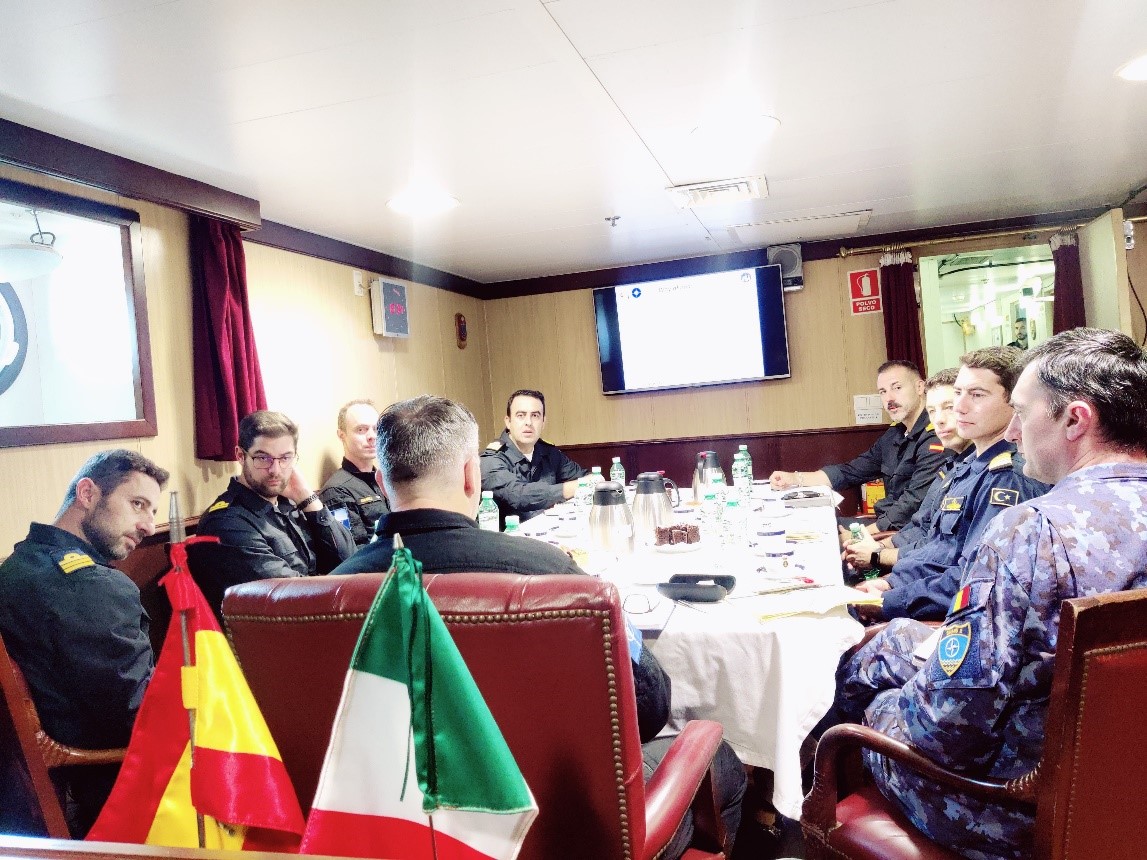
The Combat Supply Vessel ‘Cantabria’ receives a visit from the NATO Commander of the NATO Standing Maritime Group No. 2
The Combat Supply Vessel ‘Cantabria’ receives a visit from the NATO Commander of the NATO Standing Maritime Group No. 2
2024/10/17At the Mediterranean Sea
More information

